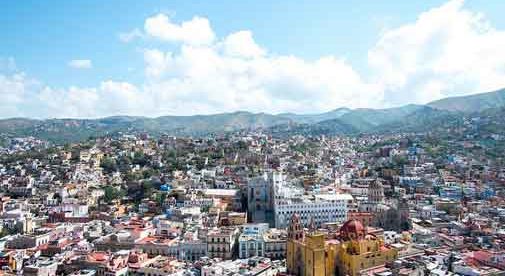| Why Mexico Still Excites Me After 10 Years Living Here
They probably think of Oaxaca (where I bought table linens and handmade rugs, and sincerely wished I'd brought a U-Haul for more) or San Cristóbal de las Casas. Nor is it a great center for commercially made household goods (go to Tonalá and Tlaquepaque, outside Guadalajara, for those).
|
Why Mexico Still Excites Me After 10 Years Living Here
This past spring, I traveled around Mexico to buy furnishings for the new upstairs of my house in Guanajuato, in Mexico’s Colonial Highlands. I’d decided that I was going to completely furnish the space with handcrafted items, and I have.
Several trips were to the nearby state of Michoacán. Folks outside Mexico don’t necessarily think of Michoacán for handicrafts. They probably think of Oaxaca (where I bought table linens and handmade rugs, and sincerely wished I’d brought a U-Haul for more) or San Cristóbal de las Casas. Nor is it a great center for commercially made household goods (go to Tonalá and Tlaquepaque, outside Guadalajara, for those).
But the fact is, when you live in Mexico, you find wonders—handicraft villages, ancient ruins, fabulous markets, superb local festivals—everywhere. And exploring this staggering richness is one of the joys of living here.
On my buying trips, the journey itself was half the fun. Friends and I would set out for a two- or three-day trip…and certain things on our agenda were sacred. First, we always stopped right away for a snack. Guanajuato State is Mexico’s strawberry capital, and stalls line the highway outside town, advertising fresh strawberries and cream. We have a favorite stall, where a big plastic cup of strawberries and fresh cream, lightly dusted with sugar, costs just over $1. As a midmorning snack, it can’t be beat.
In Pátzcuaro, a lovely Spanish-colonial city, we stay at an aging, colonial-style hotel that is slightly rundown but centrally located…and where double rooms (with a king-size bed) run about $25 a night and singles about $15. (Someday someone will buy this hotel and tart it up…and it will probably lose its authentic, down-at-heels charm.)
From Pátzcuaro we hit all the nearby villages…the one that specializes in furniture, the one that does wicker, the “copper village,” the market with the best wooden spoons around… And we stop to eat at favorite places, like the out-of-the-way village with the out-of-this-world turkey mole. (Lunch for four—two enormous handmade, corn-tortilla tacos apiece—cost $12. The homemade pickled peppers—we ate the whole jar—were free.) We end the day with dinner at a restaurant where the waiters know us, our favorite red wine is always available, and where the steaks are cooked exactly the way we like them.
I discovered similarly “favorite places” when I lived in the Yucatán Peninsula. I visited Maya ruins and nature areas that are featured only in the most detailed, specialized guidebooks—if at all. I know a place in the little village of Muna where an artist makes museum-quality replicas of Maya pottery…and if you’re lucky, cochinita pibil—pork in pibil sauce, one of the glories of Yucatecan cooking—is on the lunch menu.
My experience is far from unique; expats in any of Mexico’s many expat havens can speak eloquently of colorful, special, favorite places near them. And no matter how many of these special places you find, there always seem to be more—Mexico is that big. After living here more than 10 years, I’ve reconciled myself to having a bucket list that grows eternally longer, not shorter. (Just ask me about that kayak trip down the coast of Baja California Sur, on the Sea of Cortez, that I’ve long dreamed of doing.)
So, brace yourself: When you move to Mexico, you, too, will find yourself making ever-longer bucket lists.
So much to see, so little time. It’s a good problem to have.

No comments:
Post a Comment
Thank you. Comments are welcome.
ivan